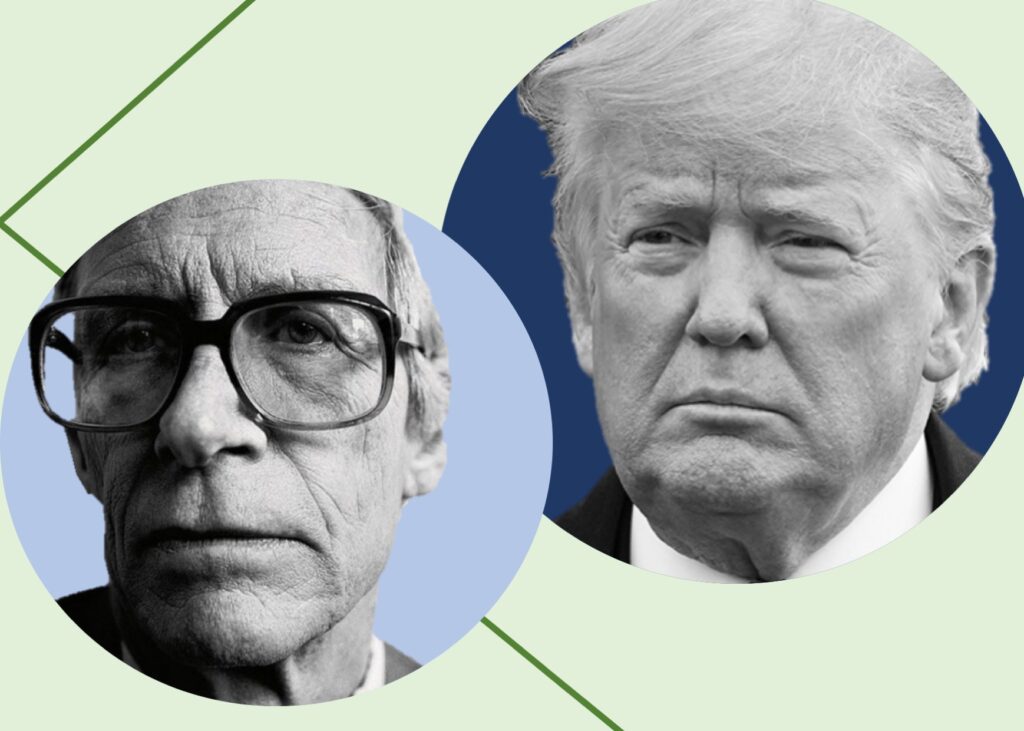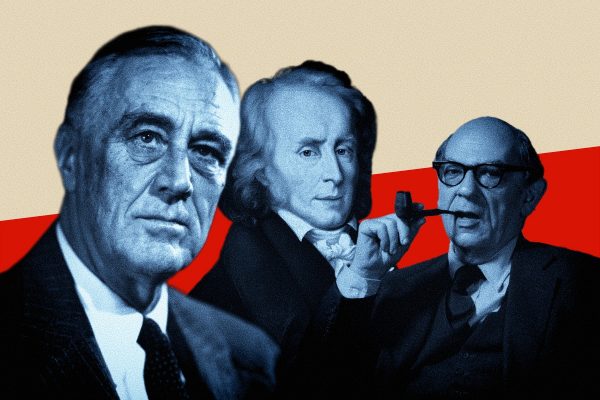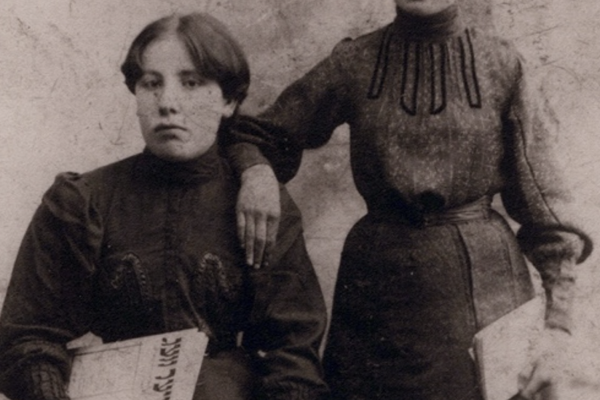These are difficult times for liberal theorists. Fewer than thirty years after the end of the Cold War ushered in a period of unprecedented liberal ascendancy, liberalism today is in retreat—or at least on the defensive—in many parts of the world. A new generation of authoritarian strongmen have come to power in a number of countries, riding waves of populist, nationalist, and anti-globalist sentiment, and other countries may well be headed in the same direction.
It is tempting to interpret these developments as revealing a deep flaw of some kind in liberalism. As one political scientist told the New York Times, “What we’ve seen is a kind of backlash to liberal democracy. . . . masses of people feel they have not been properly represented in liberal democracy.” Some critics place the blame on liberalism’s excessive individualism: its failure to recognize the importance of national identity or patriotic sentiment, its marginalization of religion, its devaluation of the nation-state, or its general tendency to privilege the global and universal over the local and particular. Others have suggested that the fault lies with contemporary liberalism’s insufficient individualism: its creation of huge state bureaucracies exercising control over virtually every area of human life, its endorsement of unsustainable social welfare programs, or its policies of rights inflation.
It is tempting to interpret the rise of authoritarianism as revealing a deep flaw in the theory of liberalism.
Although self-criticism and self-reflection are rarely out of place, there is a danger here of blaming the victim. Liberal ideas and institutions have lately come under sustained assault by avowedly anti-liberal social and political forces, and it would be little short of tragic if the predominant liberal response was to engage in handwringing about the flaws of liberalism rather than to join the political and intellectual battle against the forces committed to subverting liberal, democratic institutions.
We should also remember that the actual political societies and institutions that think of themselves as liberal, and that are seen as such by others, stand in a complex and uncertain relation to the familiar liberal theories debated by political philosophers and theorists. Bill Clinton and Barack Obama were not John Stuart Mill and Immanuel Kant; the flaws and imperfections of actual liberal societies may or may not reflect any inadequacies in liberal theories. They may reveal only the extent to which actual societies have failed to conform to the requirements of liberal theory.
The flaws of actual liberal societies may—or may not—reflect any inadequacies in liberal theories.
Furthermore, liberalism is a broad church, and although recent political developments may reveal flaws in some denominations, they may teach us little about the flaws in others. For example, they point to deficiencies in the so-called “neoliberalism” that has become prominent in recent decades, but they reveal little about the deficiencies of theories such as the one defended by John Rawls. Indeed, Rawlsian liberalism itself contains a warning against the most egregious failure of liberal institutions in recent decades, at least in the United States: the failure to achieve—or even to strive seriously to achieve—an ideal of reciprocity. This is not, of course, to say that the United States had previously achieved that ideal, only that its shameless disregard of the ideal in recent decades has contributed to the country’s recent woes. The Rawlsian warning provides the basis for a compelling diagnosis of the conditions that enabled Donald Trump to win the U.S. presidency. In providing this diagnosis, Rawls’s theory shows that the rise of someone like Trump, in response to the failures of American political institutions, was entirely consistent with what the most influential contemporary version of liberal theory would lead one to expect. To that extent, Trump’s success vindicates rather than undermines liberal theory.
Yet the vindication is not complete. As I will explain toward the end, recent political developments do give us reasons to worry about the viability of liberalism, even in the form Rawls defended. But let me turn first to the Rawlsian diagnosis of Donald Trump. The point of the diagnosis is not that Trump is a Rawlsian, of course. It is rather that, when liberal societies blatantly ignore the importance of reciprocity over a long period of time, it is not surprising that there should be a backlash, and that the form the backlash takes, although difficult to predict in advance, may be extremely dangerous. It is as likely to express itself in a repudiation of liberalism as in a renewed commitment to perfecting a liberal scheme.
• • •
In Chapter VIII of A Theory of Justice (1971), Rawls develops a moral psychology that is meant to underwrite his claims about the stability of his conception of “justice as fairness.” As usual, he takes utilitarianism—a theory that exerts massive influence not only in philosophy but also in law, economics, and public policy—as his primary foil. His aim is to demonstrate that, because utilitarianism requires a moral psychology of sympathy, it is less stable than his own theory, which relies instead on a moral psychology of reciprocity.
Rawls’s theory of justice envisions a society based on reciprocity—with institutions that affirm the good of all citizens.
Rawls begins by arguing that there is a deep human tendency to reciprocate the love of others and the concern they show for one’s well-being. In short, we tend to repay kindness with kindness. This tendency manifests itself in primitive form in young children, where it is implicated in the earliest stage of moral development. It then plays a crucial developmental role in the long process that leads, under favorable conditions, to the eventual emergence in adults of mature moral motivation.
The psychological and developmental role of reciprocity counts in favor of his principles of justice, Rawls says, because those principles are themselves reciprocity principles. They embody an idea of reciprocity in their very content. In a well-ordered society that conforms to his principles, the good of all citizens is publicly affirmed, and that affirmation is manifested in the fundamental orientation of the society’s basic institutional structure. In such a society, everyone’s basic liberties are secured, all citizens enjoy fair equality of opportunity, and those who are better off forswear additional gains for themselves except insofar as these would redound to the benefit of the worst off. In these concrete respects, a commitment to affirming the good of each citizen is inscribed into the basic charter and institutions of the society.
The United States in recent decades has egregiously failed to live up to any reasonable standard of reciprocity.
This is the sense in which Rawls’s principles are reciprocity principles. As such, he argues, they can generate their own support by drawing on sources of motivation that are especially powerful, because they are psychologically continuous with the developmentally most primitive forms of moral motivation. By contrast, utilitarianism is prepared to sacrifice the fundamental interests of some people in order to increase aggregate or average social welfare. If those who lose out in the utilitarian calculus are to accept their fate and to remain stably disposed to uphold utilitarian principles and institutions, as would have to be the case in a stable, well-ordered utilitarian society, their sympathetic identification with their fellow citizens must be so great as to silence any unhappiness or resentment they might otherwise feel about the neglect of their interests. Although sympathy is an important feature of human psychology, Rawls believes it is not strong enough or securely enough situated within the human motivational repertoire to be a reliable source of support for utilitarian principles and institutions.
Rawls’s principles of justice belong to what he calls his “ideal theory,” which assumes a well-ordered society in which there is strict compliance with the requirements of justice—a sharp contrast to the decidedly non-ideal circumstances of the world we actually inhabit. But although Rawls’s ideal theory draws on his moral psychology, there is nothing idealized about that moral psychology itself or about the emphasis on reciprocity that is part of it. Rawls imagines the principles of justice being selected in a fair hypothetical choice situation he calls “the original position,” and he says the parties in the original position, even when selecting principles of justice for the ideal case of a well-ordered society, must rely on a realistic moral psychology. They must avoid selecting a conception of justice, however attractive it might otherwise be, if, realistically, people would not be motivated to comply with it even when the institutions of their society satisfied it. Such a conception would be unable to generate its own support and so would be unstable. That, he thinks, is the problem with utilitarianism. And this realistic moral psychology, with its emphasis on reciprocity, can also illuminate our real-world situation, for it characterizes human motivation in non-ideal conditions as well as in ideal ones.
If we therefore assume, in a Rawlsian spirit, that the stability of just institutions, whether under ideal or non-ideal conditions, requires that they cohere with the psychology of reciprocity, and if such coherence is most fully achieved when social institutions manifestly affirm, in their policies and priorities, the good of all citizens, then what are we to say about the United States in the decades preceding the election of Donald Trump?
There are many things we might say. We might ask, for example, about the steep rise during that period in “deaths of despair” among working-class whites with a high school degree or less, which has been documented by the economists Anne Case and Angus Deaton. Or we might ask about the emergence of the Black Lives Matter movement as a response to persistent patterns of violence, especially police violence, against black people. Is the shocking rise in midlife mortality among poor and working-class whites an indication that the basic structure of American society manifestly affirms the good of those citizens? Are the persistent patterns of violence and racism directed against black Americans a sign that an affirmation of their good is inscribed in the fundamental priorities and policies of the major political and social institutions of the United States? These questions answer themselves.
Rawls warns that serious and sustained violations of reciprocity are likely to produce a destabilizing backlash.
There are many other questions we could ask—about the growing influence of money on the political process, say, or about the rising cost of a college education and the obstacle it presents to achieving fair equality of opportunity. But perhaps it is sufficient to take note of the skyrocketing economic inequality that characterized U.S. society during the years in question. Rawls’s claim that his principles embody an ideal of reciprocity rests heavily, though not exclusively, on the fact that his “difference principle,” which governs the distribution of income and wealth, requires economic inequalities to be arranged in such a way as to maximize the position of the worst-off group in society. Robert Nozick once asked, in objecting to the difference principle, how we would feel about a principle that required inequalities to be arranged in such a way as to maximize the position of the best-off group. Nozick’s mischievous question was a fanciful hypothetical that was intended to cast doubt on the strength of Rawls’s argument for the difference principle. But if one looks at patterns of inequality in the United States in recent decades, it is difficult to avoid the conclusion that the basic structure of U.S. society has come closer to satisfying Nozick’s hypothetical principle than it has to satisfying Rawls’s difference principle. That is, the inequalities fostered by U.S. institutions have come closer to maximizing the position of the best-off group than to maximizing the position of the worst-off group.
In short, the United States in recent decades has egregiously failed to live up to any reasonable standard of reciprocity, because its institutions and policies have blatantly failed to affirm the good of all citizens. If, as Rawls maintains, the stability of otherwise just institutions depends on their embodying an idea of reciprocity, then what we should have expected to see as a consequence of those failures is just what we have in fact seen: growing resentment and discord, and the degrading and destabilizing of liberal institutions. In one respect, the situation is even worse than this might suggest. Rawls’s point was about the stability of otherwise just institutions. Or, more accurately, it was about whether a candidate theory of justice could generate its own support if it did not meet the standard of reciprocity. The pre-Trump United States failed to meet that standard, but not because it was attempting to realize a utilitarian theory of justice that relied more heavily on sympathy than on reciprocity, and not because it was attempting to satisfy any serious theory of justice at all. Instead it was simply allowing, or even encouraging, the wealthy and the privileged to prosper at the expense of everyone else. And if even utilitarianism, which seeks to advance the general welfare, contains the seeds of instability because it fails to satisfy the conditions of reciprocity, then what are we to say about institutions that fail to satisfy those conditions because they neglect the worst-off and allow the wealthiest to amass almost unimaginable riches? What we can say is that they provide fertile conditions for the emergence of a candidate, and a president, like Donald Trump.
The basic structure of U.S. society has come closer to satisfying Nozick’s hypothetical principle than it has to satisfying Rawls’s difference principle.
Two caveats. First, in 2016, almost three-quarters of eligible U.S. voters did not vote for Trump. Only about 60 percent of eligible Americans voted. Of those, roughly 48 percent voted for Hillary Clinton, while roughly 46 percent voted for Trump. So, of total eligible voters, slightly more than a quarter cast ballots for Trump. Many of them were presumably reliable Republicans who would have voted for anyone the Republicans nominated. The reasons that moved the remainder to support Trump were no doubt various, and the relative importance of different reasons has been much debated. Most of the analysis has focused on the respective roles of economic anxiety and the fear of cultural displacement as factors that led voters to support Trump. However, those two factors are closely intertwined, and I doubt whether they can be neatly disentangled, especially since Trump, following in the footsteps of many of his Republican predecessors, worked assiduously to convert even legitimate economic grievances into poisonous social animosities. In any case, it seems clear that the sustained failure of American institutions to satisfy any reasonable standard of reciprocity, and especially their embrace of staggering levels of inequality, created or contributed to conditions in which attitudes of grievance, anger, and resentment, not all of them unreasonable, flourished among enough voters to enable a candidate like Trump, who exploited those attitudes to great political advantage, to be successful.
The second caveat is this. It was not inevitable that Donald Trump in particular would be the electoral beneficiary of those attitudes. The unexpected success of Bernie Sanders, who addressed some of the same attitudes of grievance and anger as Trump did, suggests that the attitudes in question were to some degree malleable. They were liable to be articulated in different ways and channeled in different directions, some more constructive than others. Indeed, some of the people who voted for Sanders in the primaries—12 percent according to two surveys—voted for Trump in the general election, and their influence was especially significant in the crucial states of Pennsylvania, Wisconsin, and Michigan. Trump was, one might almost say, Bernie Sanders’s evil twin. As has been widely remarked, it is perhaps the final irony of his victory that he is likely to do so little to address the legitimate grievances of those of his supporters whose interests have been neglected in recent decades.
Given the political importance of reciprocity, it is telling that Trump uses the language of fairness and reciprocity so frequently. According to the New York Times, the word “reciprocal” is “one of Mr. Trump’s favorite terms.” Again, this obviously does not mean that Trump is a Rawlsian or that he is likely to move the United States closer to satisfying an ideal of reciprocity. Far from it. Rawls warns that serious and sustained violations of reciprocity are likely to produce a destabilizing backlash, the form of which is unpredictable. The resentments inspired by sustained inequality are just as likely to be stoked and exploited by unscrupulous and demagogic forces as they are to be marshalled effectively to achieve greater social justice. Trump’s example reminds us that the demagogue’s toolkit may include the cynical appropriation of the language of fairness and reciprocity to express a narcissist’s grandiose sense of grievance, and to provide a fig-leaf for the cultivation of group animosities and, in the worst case, the legitimation of violence. If that happens, then, as Rawls says in a different context, “the moral quality of political life will . . . change in ways that are obvious and require no comment.”
What does all this mean for liberalism? Does the recent rise in authoritarianism reveal flaws in liberal theory?
Whenever a political society that identifies itself with a particular political philosophy or ideology runs into serious trouble, it is common for defenders of that philosophy or ideology to argue that the society didn’t subscribe to the right version of the view, or that the society’s failures are due not to the deficiencies of the theory but rather to the failure of the society to implement it fully or properly. Such claims are easy to make and difficult to falsify, because it is almost always true that there were other versions of the theory and that the society did fail to implement its preferred version—or any version—fully or faithfully. This makes it all too easy for defenders of the theory to employ what might be called “the generic defensive strategy” of denying that the woes of the society count against the right version or the best version of the view. Marxists made such claims, for example, when the Soviet Union collapsed, and any liberals who were skeptical of those claims should be wary of relying too heavily on parallel claims when liberal societies run into trouble.
Trump’s success is entirely consistent with what liberal theory would lead one to expect.
They should be wary not merely because of the easy availability and near unfalsifiability of such claims, but also because there is a real question how far the assessment of a political theory can remain unaffected by the fate of attempts to realize or implement the theory in practice. After all, one fact that any political theory must take into account is that it must be implemented politically by flawed human beings, who will inevitably be subject to pressures of many different kinds, whose interests are likely to coincide only up to a point, and who—as my colleague Jeremy Waldron has long insisted—are bound to disagree about many things, including the very theory they are implementing. A theory would not be adequate as a theory if its appeal depended on a denial of those points. And so we should wonder: if sustained attempts to implement or realize a political theory run into serious difficulty, are we really so sure that this shows nothing at all about the merits of the theory?
I have argued that there is ample room for liberals to deploy “the generic defensive strategy.” They can insist that pre-Trump America did not remotely live up to the requirements of the most defensible versions of liberal theory; its failures were not the failures of those versions. Rawls’s theory also goes beyond the generic defensive strategy. It provides the basis for a plausible diagnosis, from the standpoint of liberalism itself, of the failures of U.S. institutions in the pre-Trump era and of the conditions that enabled Trump to win the presidency. Accordingly, Trump’s success is entirely consistent with what liberal theory, in its most influential contemporary version, would lead one to expect. To that extent, it vindicates rather than undermines the theory. But, it must be said, only to that extent.
To what extent can assessment of a theory remain unaffected by failures to realize it in practice?
As I have noted, the generic defensive strategy is not fully satisfying, because there remains a question about the degree to which the assessment of a political theory can legitimately remain unaffected by the failures of sustained attempts to realize it in practice. Nor does the Rawlsian diagnosis, however compelling, settle this question. So the residual issue for liberal theory is this. If liberal societies fail, over an extended period of time, to achieve just and stable political orders that meet a reasonable standard of reciprocity, then do we nevertheless have good reason to think, or to hope, that such orders are politically achievable with sufficient effort, or should we worry that the most attractive forms of liberalism may be unsustainable in practice?
A decisive political repudiation of the turn toward authoritarianism, and a sharp reversal of the profoundly inegalitarian direction of U.S. society, would provide grounds for optimism not only about the future of the country but also about the viability of liberalism as a political philosophy.








